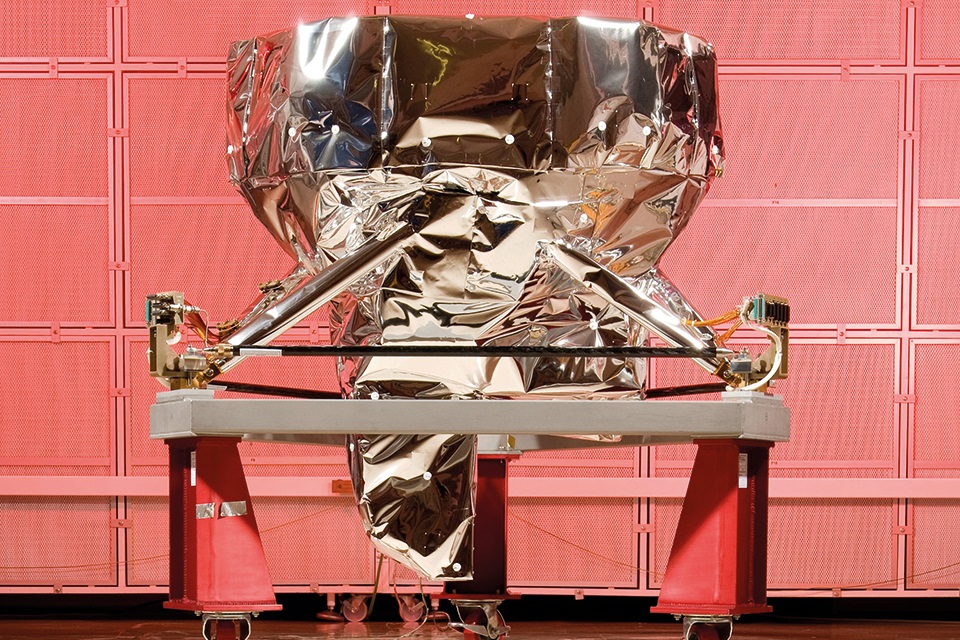UK contributes to James Webb Space Telescope mission
The telescope, known as ‘Webb’, blasted off from the Arianespace spaceport in French Guiana on 25th December 2021 at 12:20 pm - the culmination of decades of scientific collaboration.
The mission is led by NASA, the European Space Agency (ESA) and the Canadian Space Agency, with the UK playing a major role by leading the European consortium, which designed, built and tested one of the four main science instruments, working closely with partners in the US.
Science Minister George Freeman said: "Today is a monumental milestone for international and UK space science: the Webb Space Telescope will allow us to go further and deeper to explore and discover our planetary universe.
"The project draws heavily on the world-class expertise of top UK scientists and engineers who were able to deliver vital pieces of this complex and powerful telescope.
"Being at the heart of this international project showcases the innovative talent of the UK’s world-leading scientists and engineers, and emphasises our position as a global science powerhouse."
The telescope is set to redefine our understanding of the cosmos and unveil some of the secrets of the distant Universe.
Webb will peer through dusty clouds in space to allow scientists to determine how the first galaxies were formed and will see our own solar system in whole new ways and in never-before-seen detail.
Scientists and engineers in the UK were crucial to the development and launch of the Mid-Infrared Instrument (MIRI), which will be able to see the faint light from the most distant stars, effectively looking further back in time than ever before, and to peer through dust and gas to spot stars being born.

Above:
JWST's Mid Infrared Instrument (MIRI), for which the UK leads the European Consortium.
Credit: STFC RAL Space
The MIRI development has been funded by the UK Space Agency and the Science and Technology Facilities Council, part of UK Research and Innovation and ESA.
Caroline Harper, Head of Space Science at the UK Space Agency, said: "Webb is set to re-write the text books on astronomy, showing us things about the universe we have never been able to see before. I am excited to see the fascinating discoveries the spacecraft makes as it reveals the evolution of the universe.
"The UK has played a crucial role in this once-in-a-generation mission, developing the Mid-Infrared Instrument, which will examine the physical and chemical properties of objects in the early universe in greater detail than ever. This has been a fantastic example of academic-industry partnership, showcasing the skills and expertise of our scientists and engineers."
MIRI will deliver a host of capabilities, boasting a spectrograph to break up light into its constituent wavelengths, a coronagraph to block starlight and look at fainter objects next to stars and a camera to take pictures.
MIRI was designed, built and tested by a European Consortium of 10 member countries led by the UK, in partnership with the US. The European contribution is led by Professor Gillian Wright MBE of STFC’s UK Astronomy Technology Centre (UKATC) and includes STFC RAL Space, University of Leicester and Airbus UK.
The UK’s lead role in the instrument involves taking responsibility for the overall design, science performance, and the mechanical, thermal and optical design, along with the assembly, integration, testing and calibration software.
The UK (UK Space Agency since 2011 and STFC) has invested almost £20 million in the development phase of MIRI and has continued to support essential post-delivery testing, integration, calibration and characterisation activities by the UK MIRI team.
Professor Gillian Wright, European Principal Investigator for MIRI and Director of UKATC, said: "To see Webb launch, with MIRI on board, after more than two decades is a seminal moment.
"MIRI is a special instrument, for the breadth of its science, the team that built it, and being the coolest instrument on Webb. The MIRI team rose to the challenges and brought some exquisite engineering solutions to make it a reality.
"The Webb mission as a whole is an amazing technological breakthrough in scale and complexity, and this extends to the instruments, including MIRI. With the launch, all of us are excitedly anticipating the first MIRI data and the new view of the universe we will have."
Although Webb has successfully launched, its journey is only just beginning.
The giant mirror for the telescope had to be launched as 18 segments folded inside the launch vehicle and it must be unfolded, and all the segments perfectly aligned, in space. A huge sunshield the size of a tennis court is needed to keep the instruments cold enough to work and this must also be unfurled in space.
Webb will then go on a month-long journey to its destination, a million miles from Earth. In the six months after launch, the observatory commissioning will take place – with first results expected in the summer of 2022.












